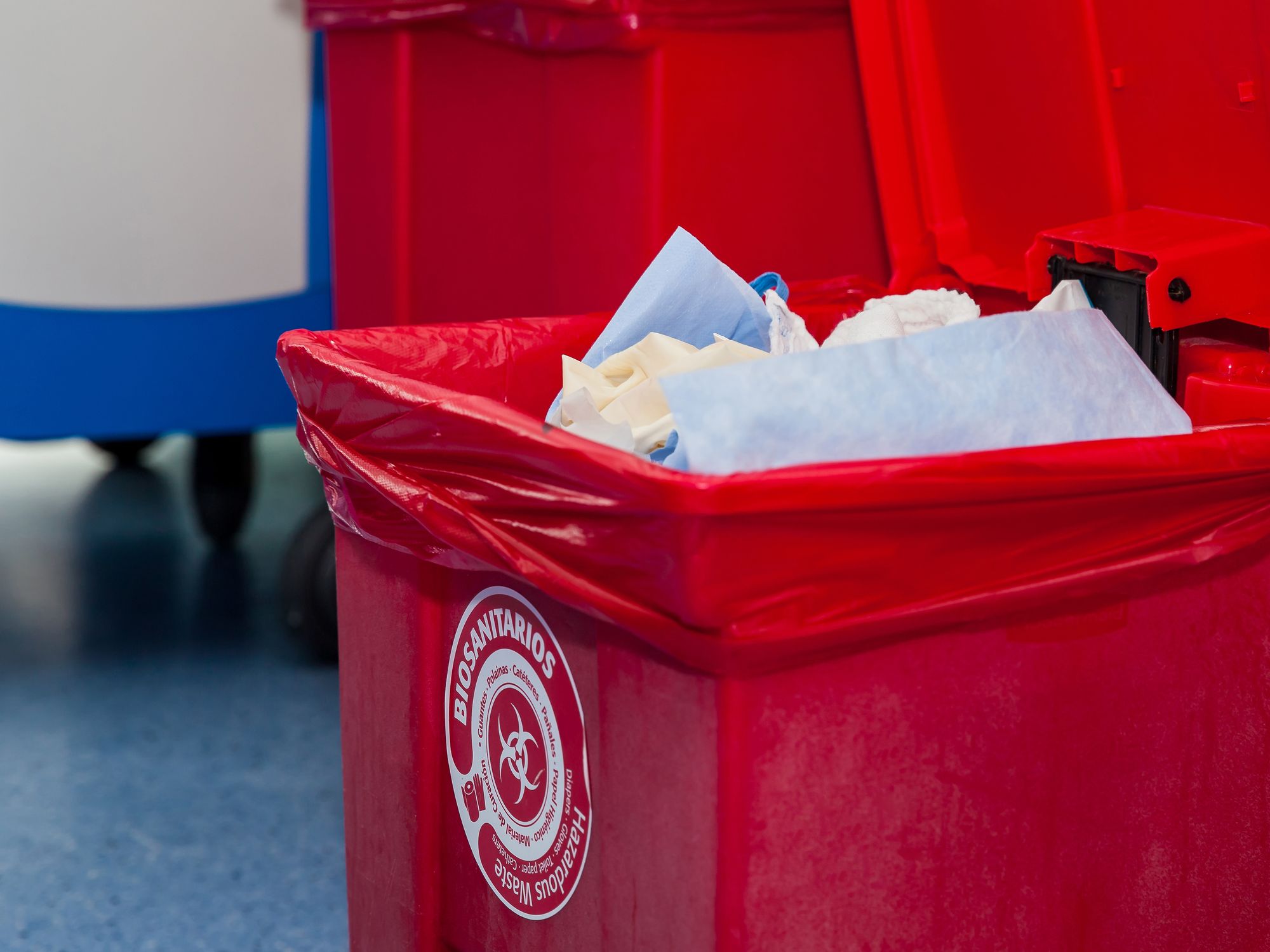Waste disposal practices

- Any waste that contains and might release blood or OPIM is classified as regulated waste, requiring specific disposal procedures.
- Regulated waste must be disposed of in secure, clearly identifiable biohazard containers.
Proper disposal of biohazard waste is essential for preventing exposure to bloodborne pathogens. One major element of this process is using biohazard receptacles so that no one accidentally handles the waste container without recognizing its potential dangers.
“Regulated waste” must be placed in closeable, leak-proof, and appropriately labeled or colored containers that are built to contain all contents during handling, storing, transporting, or shipping.
Regulated waste is defined as:
- Liquid or semi-liquid blood or other potentially infectious materials (OPIM);
- Contaminated items that would release liquid or semi-liquid blood or OPIM if compressed;
- Items that are caked with dried blood or OPIM and could release these materials during handling;
- Contaminated sharps; and
- Pathological and microbiological wastes containing blood or OPIM.
The Occupational Safety and Health Administration (OSHA) does not generally consider the following to be regulated waste:
- Adhesive bandages used for minor cuts and scrapes,
- Facial tissue used to stop a bloody nose, and
- Feminine hygiene products.
While not regulated waste, these items should be discarded in waste containers that are lined in order to prevent contact with the contents.
OSHA notes, however, that it is the employer’s responsibility to determine which job classifications or specific tasks and procedures involve occupational exposure. For example, the employer must determine whether employees can come into contact with blood during the normal handling of waste, from initial pickup through disposal in the outgoing trash.
The amount of blood is not a good determining factor because the Bloodborne Pathogens Standard is concerned with an item’s level of saturation. Ten milliliters of blood on a disposable bed sheet would appear as a spot (not regulated waste), while the same amount of blood on a cotton ball would drip (regulated waste).
Appropriate disposal for regulated waste can mean using red or labeled sharps containers for contaminated sharps. However, for contaminated waste other than sharps, it means using red leak-proof bags, or bags and receptacles marked prominently with biohazard labels. (See Labels, tags, signs, symbols, and colors section.)
Regulating bodies other than OSHA may call for more stringent disposal practices. Infectious waste disposal is primarily regulated at the state level, so employers should be aware of (and train employees in) any requirements made by their state’s environmental agency. In addition, employees must be trained in their company’s disposal practices if those practices include disposal of items beyond those items listed in OSHA’s definition of regulated waste.
Waste disposal in the construction industry
While 1910.1030 does not apply to the construction industry, employees in construction are not free from bloodborne pathogen hazards. Therefore, appropriate regulated waste containers must be provided when needed by employees responsible for giving first aid or medical assistance at a construction site, per 1926.25.
Research labs and production facilities
Employers will want to note that human immunodeficiency virus (HIV) and hepatitis B virus (HBV) research labs and production facilities may have more stringent waste disposal requirements under 1910.1030(e).
